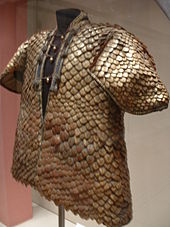For my current world in progress, I have devised a variety of species possessing multiple, unique DNA chains that can receive copious amounts of short-term energy due to their large stores of sugar. The next issue I need to tackle is the existence of certain features of some species.
My first target is the existence of various species that have bodies/skin seemingly made from minerals such as iron, rock, or steel (alright, so steel is an alloy; sue me). My intent is for humans on my WIP to use the shed armor as steel would normally be used.
I considered explaining my creatures as being silicon-based, but their chemistry and environment don't seem to align with the conditions I have already decided on for the planet. Next I considered metal-based biology, but, again ran into cohesion issues.
Since I want my mineral-like creatures to live in a world naturally inhabitable by humans, how can I explain the biology of creatures that can produce a rock-, iron-, or steel-like armor, or that have rock-, iron-, or steel-like bodies?
If possible, the body/skin/armor should have the look, feel, and properties of rock/iron/steel, even if they differ on a molecular level.






